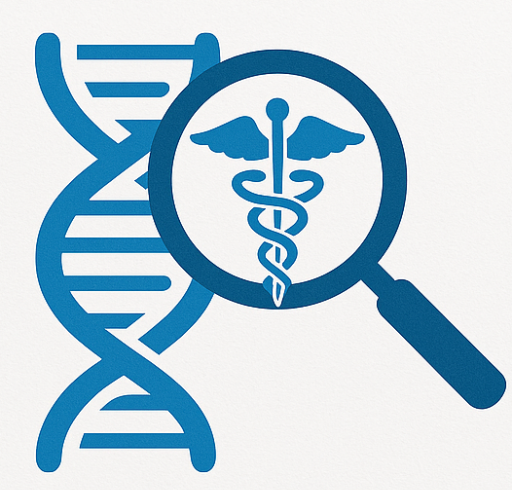🧬 The Gut Microbiome: A Central Player in Human Health
The gut microbiome refers to the dense and diverse microbial ecosystem residing primarily in the colon, comprising trillions of bacteria, archaea, fungi, viruses, and protozoa. This microbiota has functions essential to digestion, immune modulation, metabolic regulation, and mucosal integrity.
In clinical practice, disruption of the gut microbiome—termed dysbiosis—has been implicated in a wide range of conditions, from gastrointestinal disorders like IBD and IBS to systemic diseases such as metabolic syndrome, neuropsychiatric disorders, and autoimmune diseases. Research is still ongoing in this field.
If a whole genome sequence (WGS) is taken from a gut-sample, it is possible to list most of the organisms that are present in the gut microbiome. Giving unprecedented insight into the possible pathogens that might be affecting the patient. A specific diagnosis of this information for the specific patient is necessary. You can upload your DNA file in this tool for a list.
🧫 Key Bacterial Taxa of the Gut Microbiome
Below is a table summarizing the most common and clinically relevant bacterial genera and species found in the adult human gut microbiota, along with their estimated prevalence and known roles.
Usually there will be a lot of viruses present as well. Most of these will be bacteriophages: viruses that infect bacteria. These too help in keeping the unwanted bacteria in the microbiome under control.
| Taxon | Prevalence in Adult Gut Microbiota | Function / Clinical Relevance |
|---|---|---|
| Bacteroides spp. | ~100% | Dominant genus; involved in polysaccharide digestion and immune tolerance |
| Firmicutes spp. (e.g. Faecalibacterium prausnitzii) | ~90–100% | SCFA producers; anti-inflammatory; associated with gut health |
| Akkermansia muciniphila | ~70–90% | Mucin-degrading; associated with metabolic health and barrier integrity |
| Bifidobacterium spp. | ~80–90% (decreases with age) | Beneficial early colonizers; immunomodulatory and protective roles |
| Escherichia coli (commensal strains) | ~60–90% | Facultative anaerobe; important in early colonization and nitrogen metabolism |
| Ruminococcus spp. | ~70–85% | Fiber fermentation; linked to butyrate production |
| Clostridium clusters IV/XIVa (e.g. Roseburia, Eubacterium) | ~60–80% | Butyrate producers; regulate Tregs; maintain colonic health |
| Prevotella spp. | ~20–60% (more common in plant-based diets) | Carbohydrate fermenters; part of enterotype variation |
| Lactobacillus spp. | ~30–50% | Probiotic species; transient colonizers in adults |
| Methanobrevibacter smithii | ~30–50% | Archaea involved in hydrogen metabolism; modulates fermentation efficiency |
| Enterococcus spp. | ~10–30% | Opportunistic in hospitals; part of normal flora |
| Proteobacteria (e.g. Klebsiella, Citrobacter) | Variable; ↑ in dysbiosis | Increased in IBD, infections; marker of inflammation |
⚠️ Note for clinicians: Shifts in relative abundance (e.g., ↑ Proteobacteria, ↓ F. prausnitzii) are emerging biomarkers for conditions such as IBD, obesity, and post-antibiotic syndromes.
